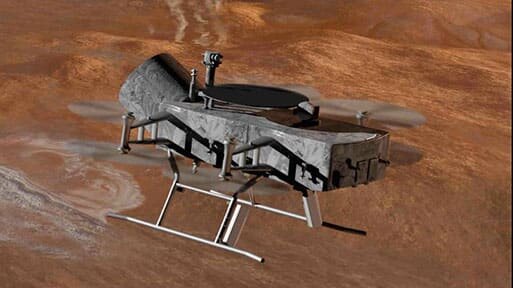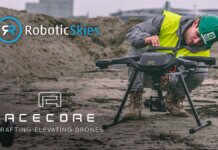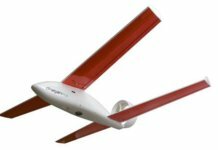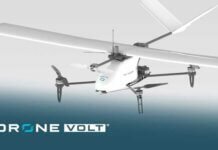The Johns Hopkins Applied Physics Laboratory (APL) has proposed to NASA an instrumented, radioisotope-powered, dual quadcopter to explore potential habitable sites where life could be developed on Saturn’s largest moon, Titan.
According to APL, a nonprofit division of The Johns Hopkins University, Titan has diverse, carbon-rich chemistry on a surface dominated by water ice, as well as an interior ocean. Dubbed “Dragonfly,” the drone would take advantage of Titan’s dense, flight-enabling atmosphere to visit multiple sites by landing on safe terrain and then carefully navigate to more challenging landscapes.
“This is the kind of experiment we can’t do in the laboratory because of the timescales involved,” comments APL’s Elizabeth Turtle, principal investigator for the Dragonfly mission. “Mixing of rich, organic molecules and liquid water on the surface of Titan could have persisted over very long timescales. Dragonfly is designed to study the results of Titan’s experiments in prebiotic chemistry.”
APL says the mission would capitalize on the rapid evolution and increased reliability and capability of autonomous aerial systems on Earth. Dragonfly would make numerous flights, moving from one geologic setting to another. (The aircraft was named by the team for the double-wing-set-equipped insect, which also hops from place to place.)
With Titan’s dense atmosphere and low gravity, flight is substantially easier than on Earth, giving Dragonfly a very broad range of capability, the lab says. Dragonfly would be powered by a Multi-Mission Radioisotope Thermoelectric Generator (MMRTG); while there is enough sunlight at Titan’s surface to see, there is not enough to use solar power efficiently.
At each site, Dragonfly would sample the surface and atmosphere with a suite of carefully selected instruments characterizing the habitability of Titan’s environment, investigating how far prebiotic chemistry progressed, and searching for chemical signatures indicative of water- and/or hydrocarbon-based life.
To accomplish these objectives, the unmanned aircraft would take four types of measurements: Mass spectrometry would reveal the composition of the surface and the atmosphere. Gamma-ray spectrometry would measure the composition of the shallow subsurface. Meteorology and geophysics sensors would measure atmospheric conditions such as wind, pressure, temperature and other factors, as well as seismic activity. Additionally, a camera suite would characterize the geologic and physical nature of the moon’s surface and help find subsequent landing sites.
“We could take a lander, put it on Titan, take these four measurements at one place, and significantly increase our understanding of Titan and similar moons,” says Dragonfly’s project manager, Peter Bedini of APL. “However, we can multiply the value of the mission if we add aerial mobility, which would enable us to access a variety of geologic settings, maximizing the science return and lowering mission risk by going over or around obstacles.”
Although the idea of exploring Titan by rotorcraft is not new, technological developments in the last two decades – specifically for drones – have made such a mission more feasible, says APL.
Later this fall, APL expects NASA to select a few of the New Frontiers mission proposals for further study. Only one will be chosen for flight as the fourth mission in the planetary exploration program, and a final mission selection is expected in mid-2019.










